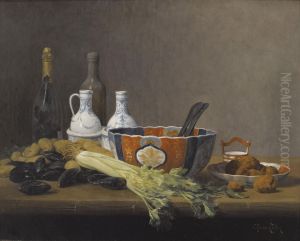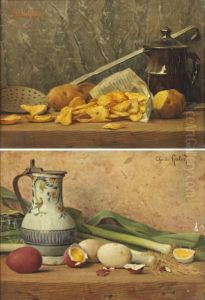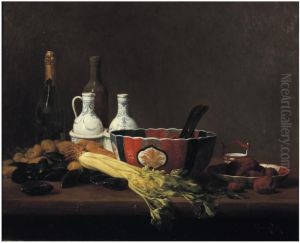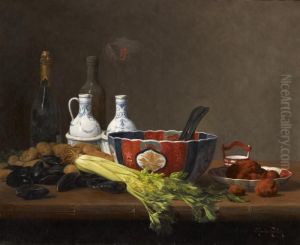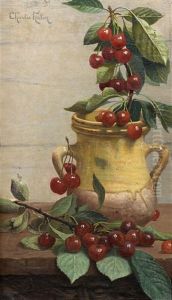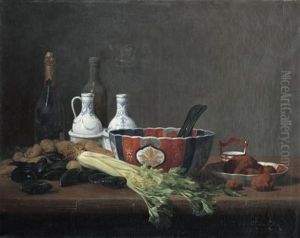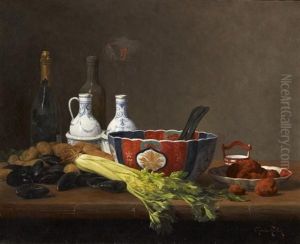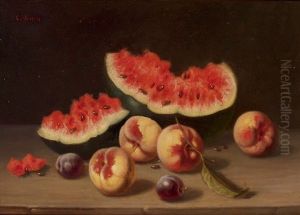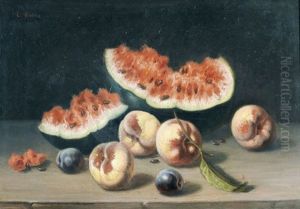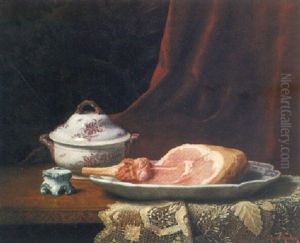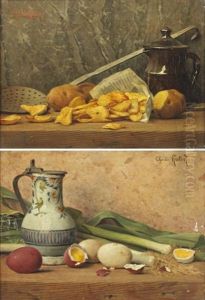Charles Hutin Paintings
Charles Hutin was a French artist born in 1715, whose career spanned the Rococo period, a highly decorative and theatrical style that emerged in early 18th century France. While not as widely recognized as some of his contemporaries, Hutin's work contributed to the richness of Rococo art, characterized by soft colors, fluid lines, and elaborate ornamentation. His artistic journey reflects the broader trends of his time, transitioning from the grandeur of Baroque to the more playful and intimate Rococo.
Hutin's early life was rooted in an era where the arts were heavily patronized by the monarchy and aristocracy. He trained under prominent masters of the day, absorbing the influences of artists such as Antoine Watteau and François Boucher, who defined the Rococo aesthetic with their pastoral scenes and voluptuous figures. Hutin, however, developed his own distinct style, focusing more on the grace and detail of everyday life rather than the mythological themes popular among his peers.
Throughout his career, Charles Hutin was known for his skill in both painting and sculpture. His works often depicted scenes of leisure and romance, capturing the light-heartedness that was prized in Rococo art. He was adept at conveying texture and movement, whether in the delicate fabric of a gown or the lively expressions of his subjects. Despite his talents, Hutin's work did not achieve the same level of fame as some of his contemporaries during his lifetime. This was perhaps due to the changing tastes of the period, as the Rococo began to be criticized for its perceived superficiality and excess.
Hutin's later years were marked by a gradual shift in artistic preferences, as the Enlightenment began to inspire a move towards Neoclassicism, with its emphasis on simplicity, symmetry, and moral seriousness. This shift affected the reception of Hutin's work, which remained deeply rooted in the Rococo style. He continued to produce art until his death in 1776, leaving behind a body of work that, while not as celebrated as that of some of his contemporaries, provides valuable insight into the Rococo era and its aesthetic values.
Today, Charles Hutin is appreciated more by art historians and collectors who recognize his contribution to the Rococo movement. His works are studied for their technical skill and as expressions of the cultural and artistic norms of his time. Though the details of his biography may be less well-known, Hutin's legacy endures in the beauty and charm of his surviving works, which continue to enchant viewers with their elegance and whimsy.
